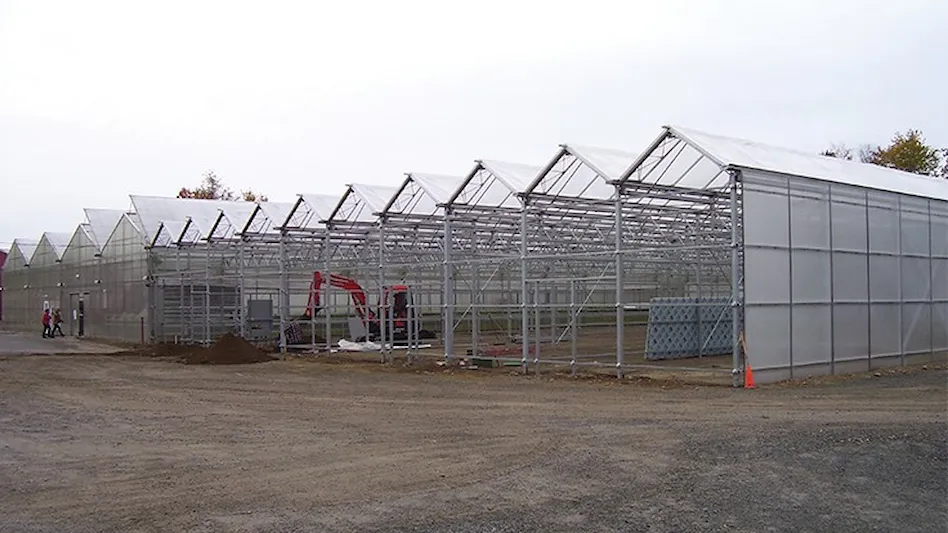

How large of a heating system (boiler, furnace, heater) do I need to heat my greenhouse? Although the calculations can get complex, especially if more than one glazing or building material is used, they can be simplified to give a meaningful estimate. The information that is needed to make the calculation is the surface area of the greenhouse, the glazing material, the desired maximum night temperature and the average coldest outdoor temperature during the winter. The two major ways heat is lost is by conduction and infiltration.
Heat loss by conduction
Most heat loss occurs by conduction with the addition of a small amount from convection and radiation. These usually occur simultaneously from the surface of the greenhouse. This component of heat loss can be calculated from the equation:
Conductive heat loss = SA x U x TD
SA is the glazed surface of the greenhouse exposed to the cold. Calculate this by adding the areas (length x width) of the roof, sidewalls and endwalls.
U-factor represents the overall heat transfer coefficient of the glazing (Btu/hr – sq ft-° F). It includes a small value for the convection and radiation component. Typical value for greenhouses with a single layer of glass, polycarbonate or polyethylene is 1.15. Use 0.7 for double poly and 0.6 for double wall polycarbonate or acrylic.
TD is the temperature difference (maximum inside night temperature - winter design temperature) (° F). A good inside night temperature is usually 70° F as this provides heat for melting snow. Winter design temperatures can be found in the following reference: bit.ly/degreedesigntemp

Heat loss from Inflation
The other major source of heat loss can be from infiltration — the exchange of warm inside air with that from outside. This exchange occurs through cracks around doors, vents and shutters, from cracked or slipped glass and from air escaping up the chimney. This component of heat loss can be estimated by the equasion:
Infiltration heat loss = 0.02 x V x C x TD
V represents the volume of the greenhouse calculated by multiplying the floor area by the average height resulting in cubic feet.
C stands for the number of air changes per hour. Use 0.5 to 1 for a new greenhouse, 1.5 for a well-maintained glass house and 2 to 3 for a poorly maintained glasshouse. Add 10 to 15% to these values if the greenhouse is located in a windy area.
TD represents the same value used in the previous equation, which is the difference in temperature (°F) between the maximum inside night temperature - winter design temperature.
Adding the conductive and infiltration heat losses together will give the total heat loss. The heating system you install should have an output rating equal or greater than the total heat loss. Consider installing two smaller units for greater efficiency and for safety.

Explore the August 2019 Issue
Check out more from this issue and find you next story to read.
Latest from Greenhouse Management
- Passion grows progress
- Registration opens for Darwin Perennials Day
- U.S. Department of Labor finalizes farmworker protection rule
- Azo Root is now available from Harrell’s
- Bidens ferulifolia Blazing Glory
- Rob Hanifin joins Ridder North America as product specialist for climate screens
- The importance of measuring light
- Spigelia marilandica





